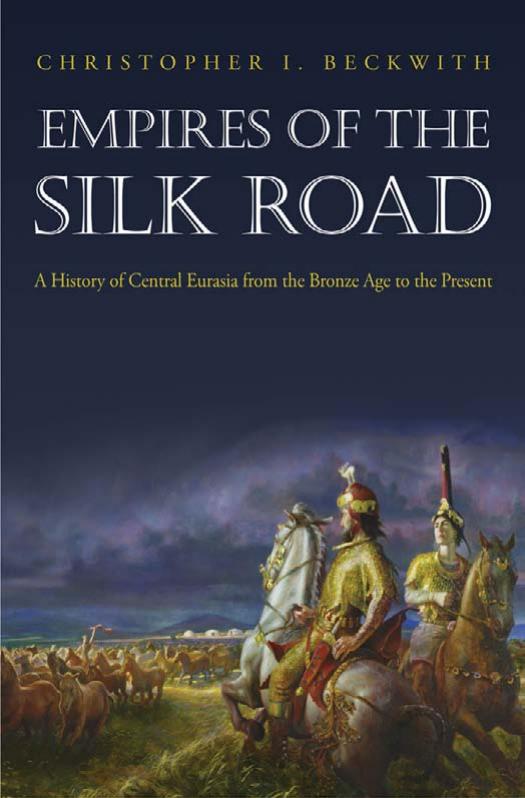Empires of the Silk Road: A History of Central Eurasia From the Bronze Age to the Present by Christopher I. Beckwith

Author:Christopher I. Beckwith [Beckwith, Christopher I.]
Language: eng
Format: epub, pdf
Tags: History, General, Asia, Europe, Eastern, Central Asia
ISBN: 0691135894
Google: 5jG1eHe3y4EC
Amazon: B004UGKKBE
Publisher: Princeton University Press
Published: 2009-03-15T16:00:00+00:00
The Manchus knew they had to neutralize or, even better, subjugate the Mongols in order to achieve their dream of reestablishing the empire of their Jurchen ancestors, the Chin Dynasty, without succumbing to the Chin fate, which was to be conquered by the Mongolsâthough the Manchus apparently did not appreciate the quite different circumstances and background under which that conquest had happened. The Manchusâ carefully crafted strategy entailed incorporating the Mongols into their state as participants rather than ordinary subjects. The Mongols, as recent converts to Buddhism, were fervent believers and strongly devoted to the Dalai Lama. The Manchus adopted the same school of Tibetan Buddhism, partly via Mongol teachers, and chose the same patron Bodhisattva and the same fierce Protector as the Mongols, Mañju-Årî and Mahâkâla, respectively. As mentioned above, they even chose Manju (English âManchuâ) as their new national name.1 Mongol attempts to stave the Manchus off were defeated by the Mongolsâ constant internecine warfare, the vast resources of the newly established Manchu Empireâs Châing Dynasty in China, and the Châing-Russian alliance.
By October 1679 Galdan had completed the Jungharsâ conquest of East Turkistan as far east as the Kokonor region (which remained in the hands of the Khoshut) and sent a message to the Châing saying of the latter region, âI want it back.â2 He also notified the Manchu emperor that the Fifth Dalai Lama had awarded him the title Boshughtu Khan, âThe Khan with the Heavenly Mandateâ. To the Manchu-Chinese, this meant that the Junghar ruler had declared himself to be the equal of the Châing ruler,3 though they did not yet consider the Junghars to be a threat.
In the 1680s the Manchu-Chinese came close to war with the Russians over the Amur dispute and even attacked the Russian fortress of Albazin on the Amur in 1684 and 1686. They also wanted to maintain and expand their control over the Mongols in the Eastern Steppe. Despite their strong military position in the Amur region, the Manchu-Chinese knew that the Junghars were on friendly terms with the Russians.
In 1687, in connection with the long-running civil war among the Mongols in the Eastern Steppe, Galdan Khanâs younger brother was killed by Tüsiyetü Khan, the preeminent leader among the Khalkhas. In revenge, Galdan led the Junghars deep into Mongolia, where they smashed the Khalkha forces. They also captured and plundered Erdeni Zuu (located at Karakorum), the greatest monastic establishment in Mongolia, ostensibly because its abbot, the Jebtsundamba Khutukhtuâthe younger brother of Tüsiyetüâhad claimed to be of equal rank with the Dalai Lama (the former superior of Galdan, who had long lived as a monk in Tibet). The Khalkhas were shattered and fled in all directions, into Châing, Russian, and Junghar territory.4 The defeat of the Eastern Mongols by Galdan, ruler of the Junghar Empire, therefore threatened Châing power in Mongolia.
After Galdanâs initial victory in Mongolia in 1687, and another victory over Tüsiyetü Khan in 1688,5 the only way the Châing could prevent the Junghars from conquering Mongolia and establishing a
Download
Empires of the Silk Road: A History of Central Eurasia From the Bronze Age to the Present by Christopher I. Beckwith.pdf
This site does not store any files on its server. We only index and link to content provided by other sites. Please contact the content providers to delete copyright contents if any and email us, we'll remove relevant links or contents immediately.
| Africa | Americas |
| Arctic & Antarctica | Asia |
| Australia & Oceania | Europe |
| Middle East | Russia |
| United States | World |
| Ancient Civilizations | Military |
| Historical Study & Educational Resources |
Magic and Divination in Early Islam by Emilie Savage-Smith;(1498)
Ambition and Desire: The Dangerous Life of Josephine Bonaparte by Kate Williams(1342)
Bohemians, Bootleggers, Flappers, and Swells: The Best of Early Vanity Fair by Bohemians Bootleggers Flappers & Swells- The Best of Early Vanity Fair (epub)(1341)
Papillon by Henry Charrière(1305)
Twelve Caesars by Mary Beard(1253)
Operation Vengeance: The Astonishing Aerial Ambush That Changed World War II by Dan Hampton(1134)
What Really Happened: The Death of Hitler by Robert J. Hutchinson(1126)
London in the Twentieth Century by Jerry White(1110)
Time of the Magicians by Wolfram Eilenberger(1084)
Twilight of the Gods by Ian W. Toll(1083)
The Japanese by Christopher Harding(1081)
Lenin: A Biography by Robert Service(1041)
The Devil You Know by Charles M. Blow(983)
A Social History of the Media by Peter Burke & Peter Burke(936)
Freemasons for Dummies by Hodapp Christopher;(921)
Napolean Hill Collection by Napoleon Hill(899)
Henry III by David Carpenter;(890)
The Churchill Complex by Ian Buruma(879)
The Rise and Triumph of the Modern Self by Unknown(877)
